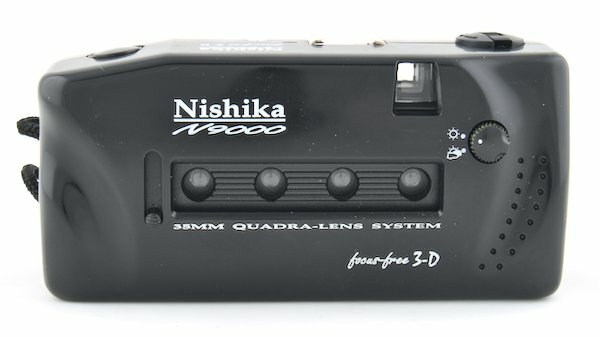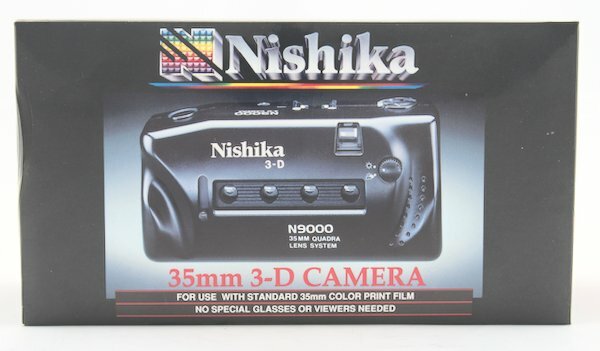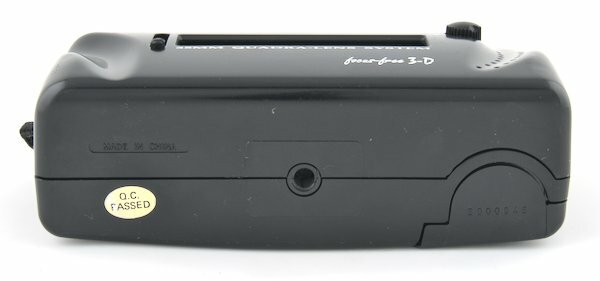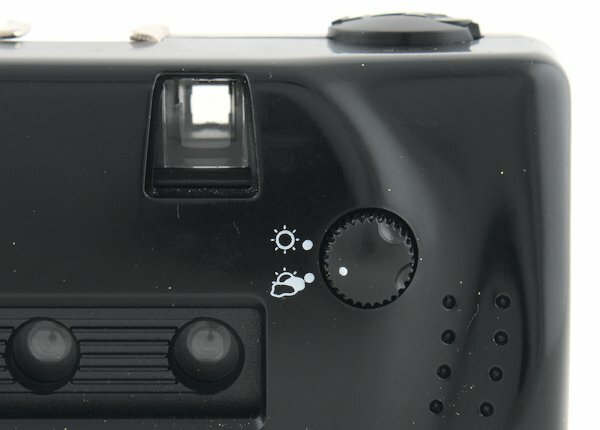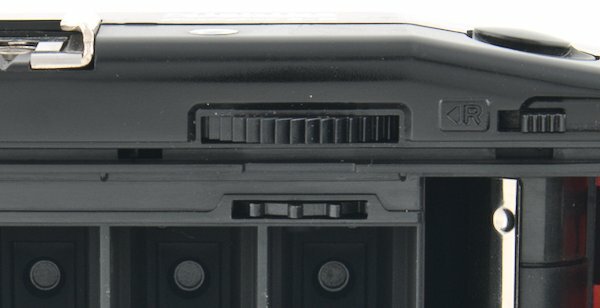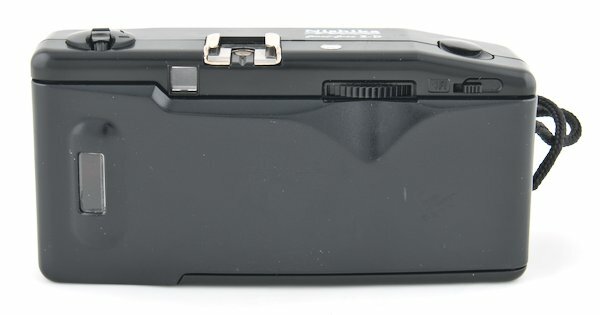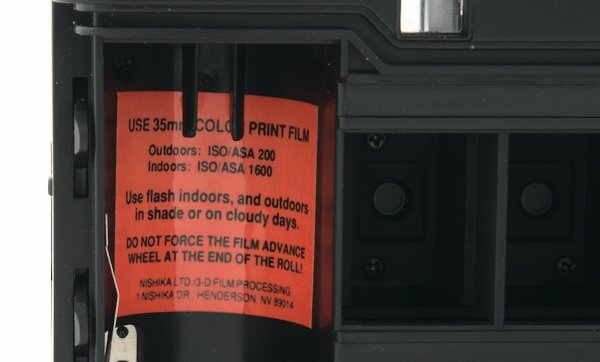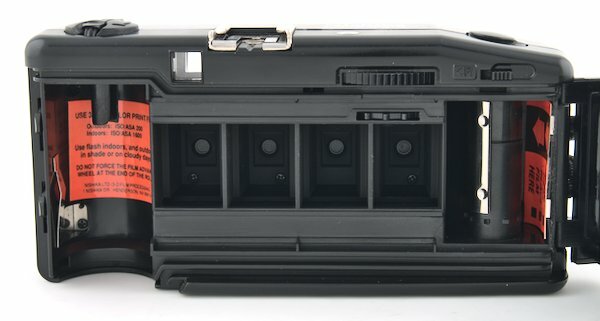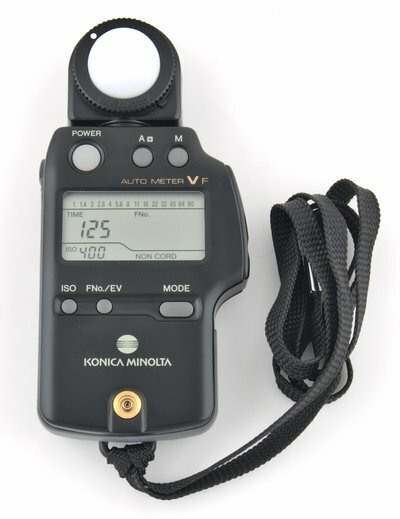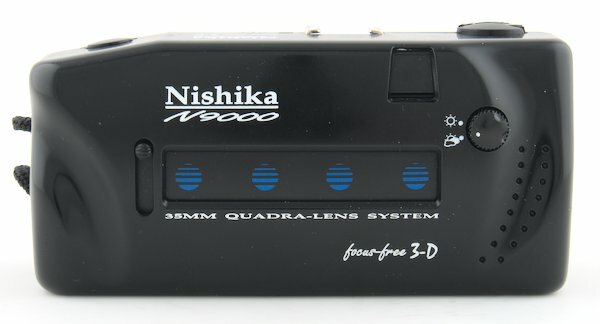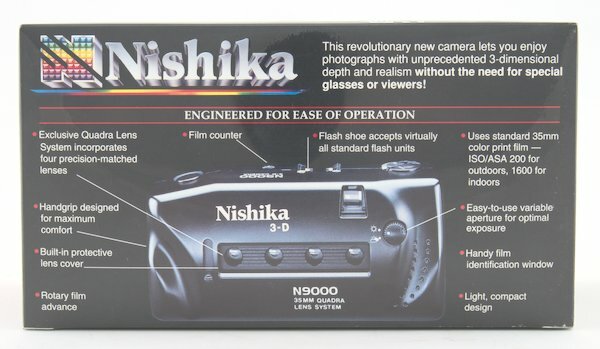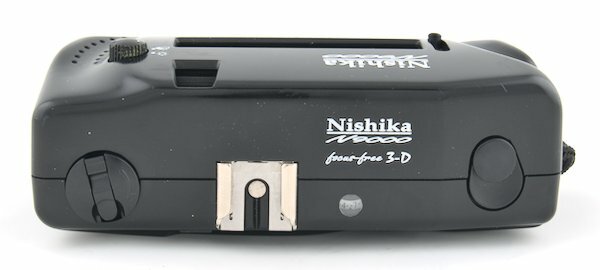A Guide to the Nishika N9000 Quadrascopic 3D Camera
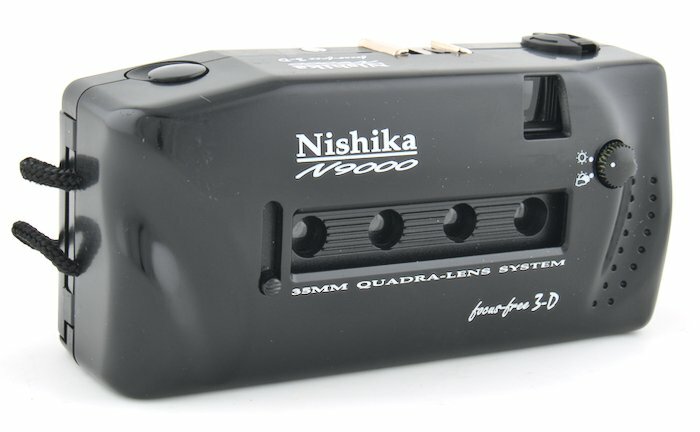
The Nishika N9000 is a 4 lens, quadrascopic film camera. The four lenses were originally used to capture images for 3D lenticular prints. These prints would produce a 3D effect when looked at.
Now the Nishika’s are more popular for creating 3D lenticular animated gifs. It does this well as it is the successor to the more well-known Nishika N8000.
There are two “different” versions of the N9000. The only change is the text and graphics that are screen printed on are different.
Nishika N9000 Price & Where to Buy
The Nishika N9000 was released in the early 1990s. What’s incredible is that brand new shrink wrapped cameras in original condition can be found. There are plenty of used copies that are less expensive.
As I’m updating this article in December of 2023, you can find good working copies of the camera for less than $100 on eBay. That’s the same price range when I wrote this article in March of 2021.
The best prices will be from winning an eBay auction. That takes patience though, as there are not always cameras for sale.
Affiliate Advertising Disclosure
Outside the Shot is a participant in the Amazon Services LLC Associates Program, an affiliate advertising program designed to provide a means for sites to earn advertising fees by advertising and linking to Amazon.com.
As an eBay Partner, I may be compensated if you make a purchase. I also participate in affiliate advertising programs with KEH and Adorama. More can be found on the Affiliate Discolsure page.
Sealed box with the other variation of text on the front of the camera.
Batteries Are Not Required
Not needing batteries is a good thing as it means there is less that can break and less weight. A few of the alternative 3D cameras like the Reto 3D or ImageTech 3D Wizard have built-in flashes.
The hot shoe on the Nishika N9000 provides more flexibility. Being able to use an external flash gives a way to control exposure by changing the flash output. One option for a hot shoe flash would be the Nishika Twin Light 3010.
Shutter Speed & Aperture Settings
The only information on the shutter speed I was able to find was from Stereoskopie.com, which said the shutter speed was 1/70 of a second. That seems off to me as the Nishika N8000 has a shutter speed of 1/60 of a second.
Additionally, 1/60 or 1/100 of a second shutter speeds are common for toy cameras and I can’t recall ever coming across a toy camera with a shutter speed of 1/70 of a second. Without testing or documentation, take the shutter speed as a guess.
The two apertures are f/11 and f/16. f/11 is the lower position with the partially cloudy image. f/16 is the upper position with the full sun.
The film is advanced with a thumbwheel, but it does not cock the shutter. The shutter is cocked from the perforations in film turning a sprocket inside the camera located directly under the thumbwheel. In order to test the shutter without film, you can manually turn this sprocket until you hear the shutter lock.
All four of the lenses have a fixed focus of 1.2m (5-1/2 feet) to infinity. The shooting guide that comes with the camera recommends not to do vertical shots as they won’t turn out well.
35mm Film - Recommended ISO
The recommended film type to use is listed on a sticker inside the camera.
Color film is recommended to be used:
- Outdoors: ISO/ASA 200 Film
- Indoors: ISO/ASA 1600 Film
For the best results have several different speeds of film available. Then select one when it is time to shoot. This is important if you will be shooting in dark conditions, such as indoors.
Another alternative is to have a flash with variable power levels so that you can meter and get a correct exposure for the film you are using.
No special processing is required to develop the film shot with the camera. Standard color film processing will work and just follow the instructions of whatever B&W developer you want to use.
If you send the film away to be processed, you will want to ask to make sure their scanning equipment can handle the half-frame images.
Viewfinder - Parallax
The viewfinder is small and offset to one side of the camera. This was likely done to keep the camera compact, but it introduces parallax. That being, the perspective you see in the viewfinder will be different than what is captured by the lenses, especially the one furthest away from the viewfinder.
Bring Your Own Metering
In my opinion, the lack of metering on the N9000 is better than the useless red dot that shows up in the viewfinder of the Nishika N8000. There is a page dedicated to the best light meters, but there are also some alternative options.
If you have a digital camera, you can use that in manual mode to check what kind of exposure you will get. Set the shutter speed to 1/60, aperture to either f/11 or f/16, and ISO to match the film you are using.
If you are using a flash, set it to manual mode and vary the power until you’re happy with the results you are getting. Then just put the flash (or flash trigger) into the hot shoe of the N9000 and you’ll be good to go.
Camera Features
The other version doesn’t have graphics on the lens cover.
The Nishika N9000 has all of the features that you would expect from a toy camera. I will say that the box does an excellent job of selling the camera.
- Hot shoe
- Wrist strap
- Tripod mount
- Built-in lens cover
Mini Nishika N9000 Review
The Nishika N9000 comes nowhere close to being as good of a camera as the Nimslo 3D. The Nimslo is the original and still the best 3D film camera you’re going to be able to find.
Compared to the other 3D film cameras out there, the cheap build quality and usability are on par with everything else. The main attraction of the camera is that it has 4 lenses, a hot shoe, and is smaller than a Nishika N8000.
The other alternative 3D cameras have 3 lenses, built-in flashes, and possibly motorized film advance. Personally, I would avoid the electronic features as they can easily break (especially the motorized film advance) leaving you with a less usable camera.
Alternative Cameras
Here are all of the 3 or 4 lens lenticular cameras I know of. The ImageTech and Kalimar models listed together are the same cameras with different branding.
- Nishika N8000
- Nimslo 3D
- Minitech Quadra Lens
- ImageTech 3Dfx, Kalimar 3D Stereo Camera
- ImageTech 3D Wizard, Kalimar 3D Wizard
- 3D Magic Single Use Camera
- Trio Automatic
- Reto 3D
